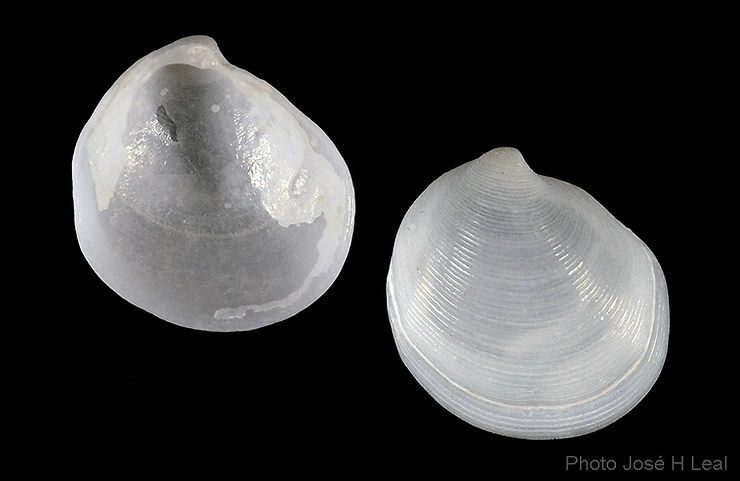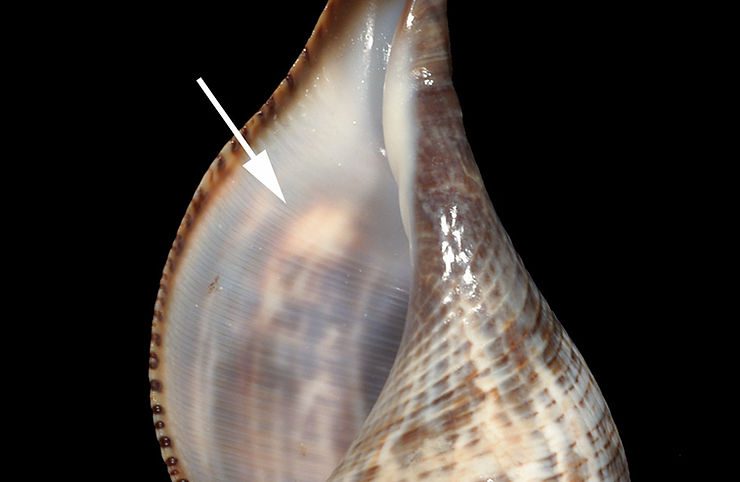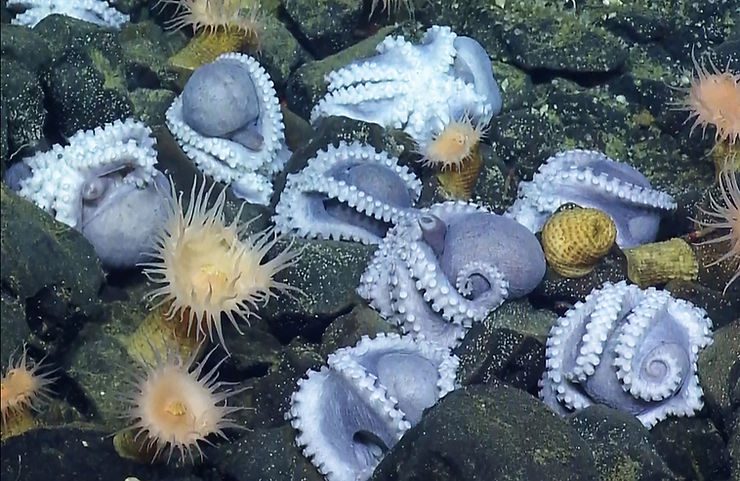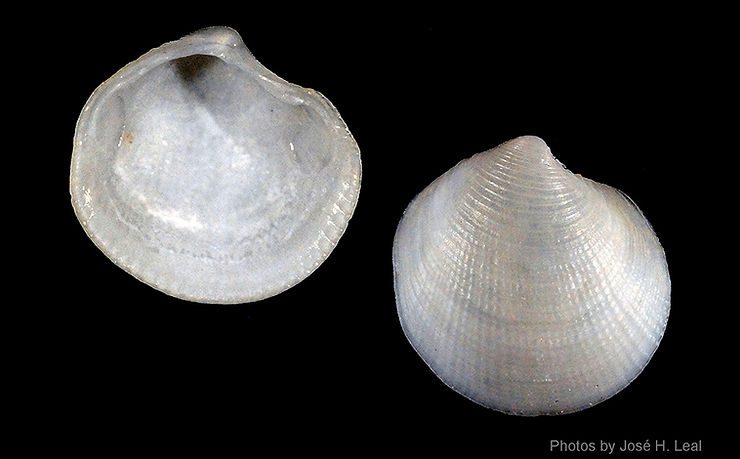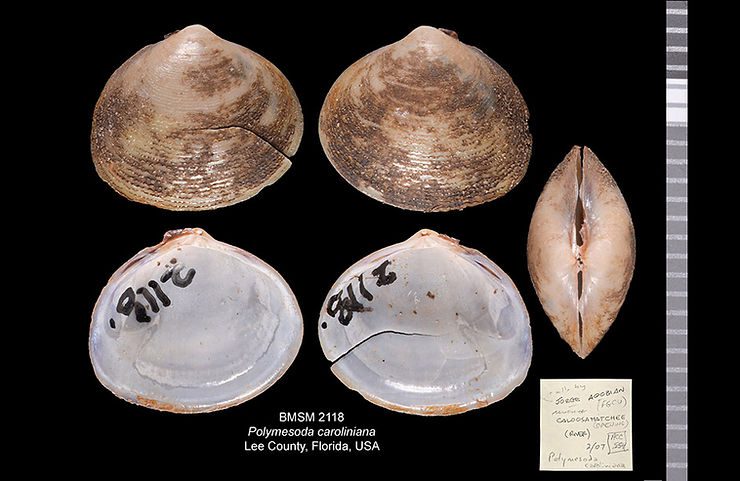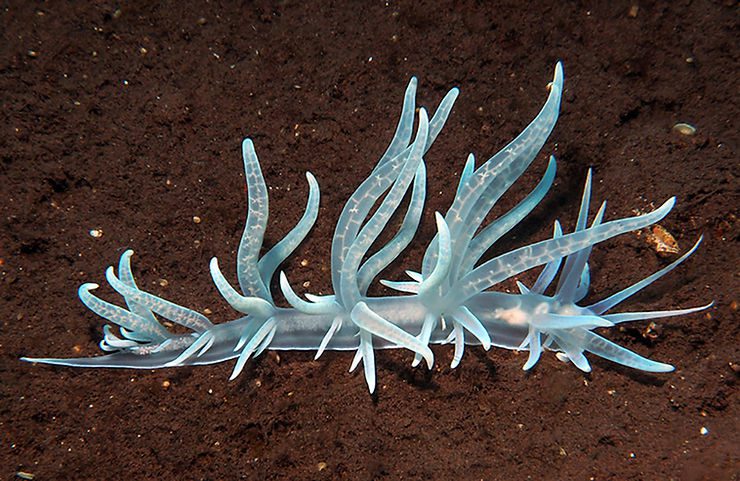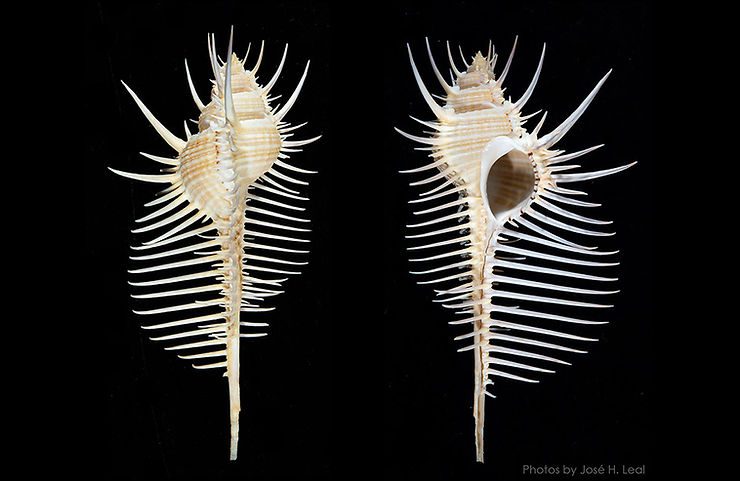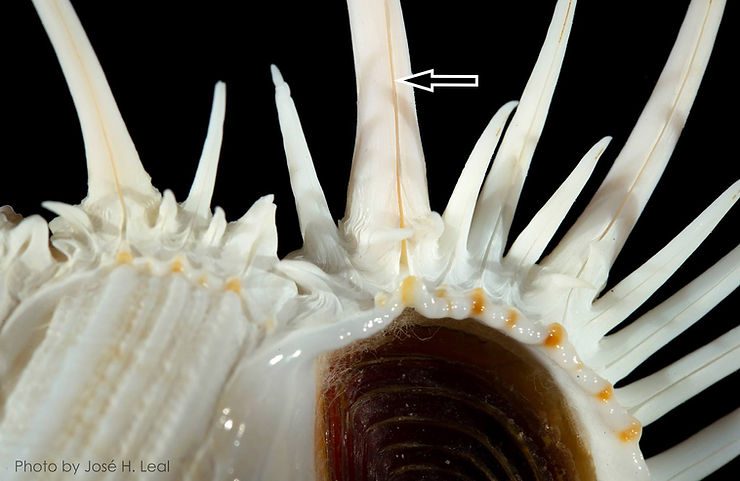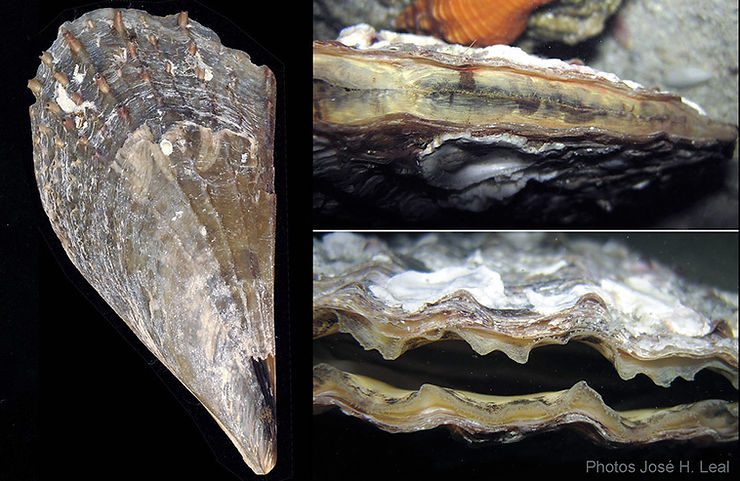
Zip-up That Mantle Edge!
Pen shells anchor themselves to the sandy bottom using a bundle of silky fibers called a byssus. The bivalve is buried with the shorter side of its triangular shell oriented upward, the pointy end down. The Stiff Pen Shell in the images below, Atrina rigida (Lightfoot, 1786), may be found in large quantities on the beaches of Southwest Florida during winter months, when storm waves pull the living bivalves from the bottom. The photos on the right show a living Half-naked Pen Shell viewed from above.
